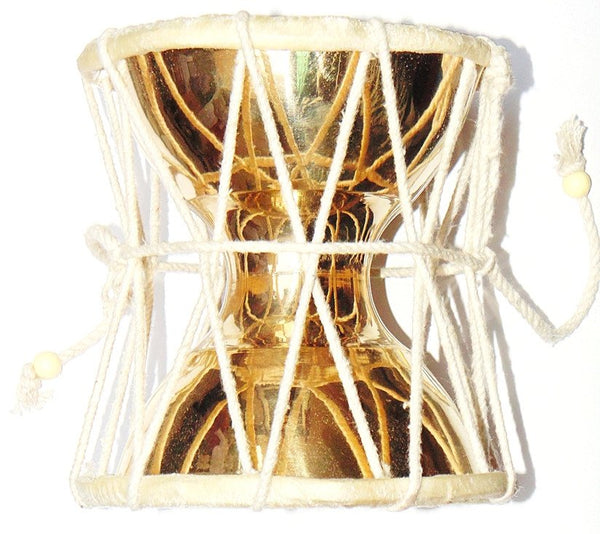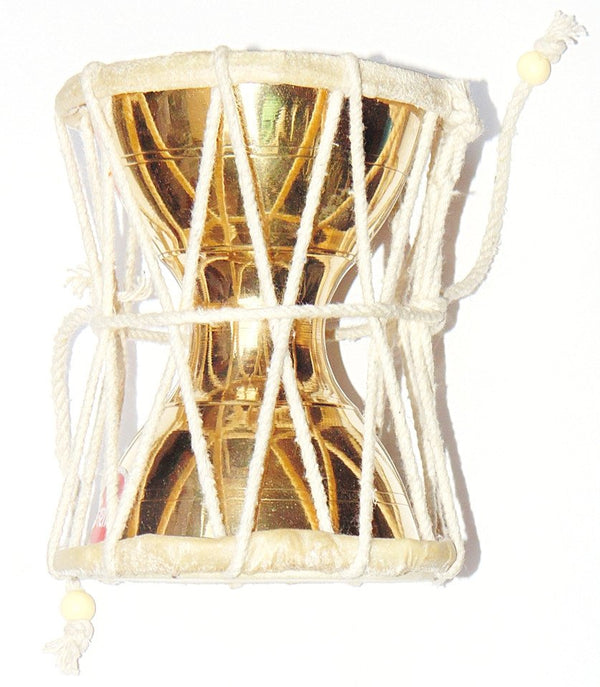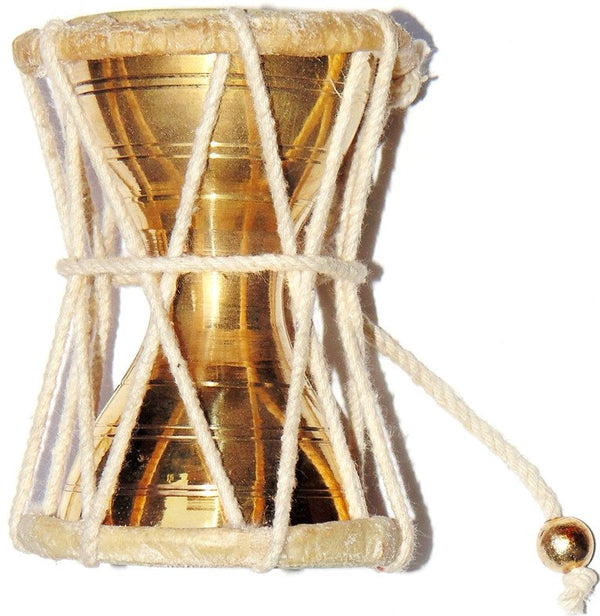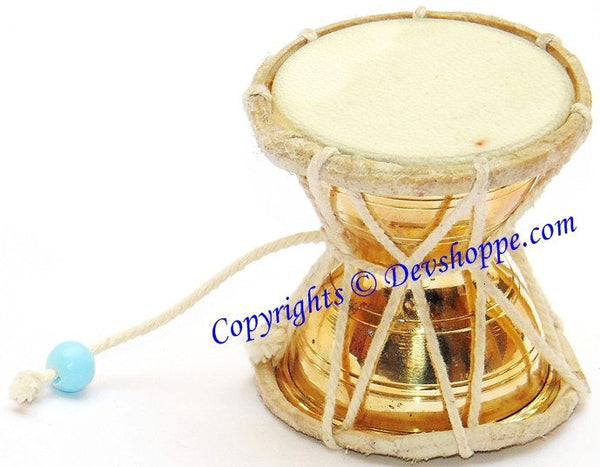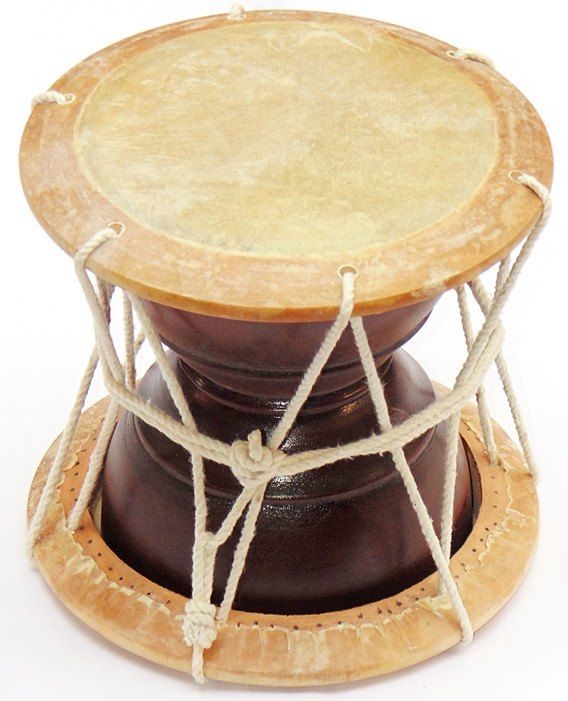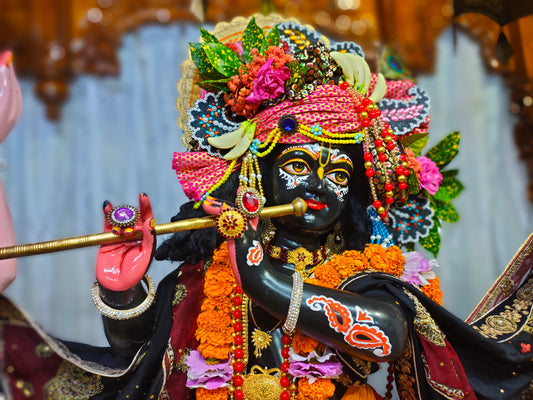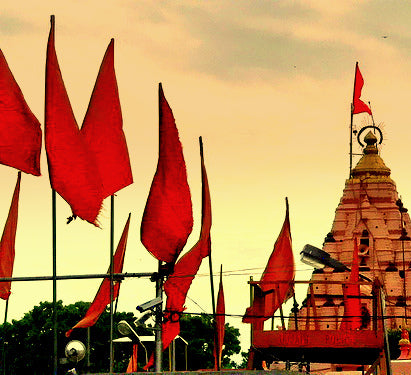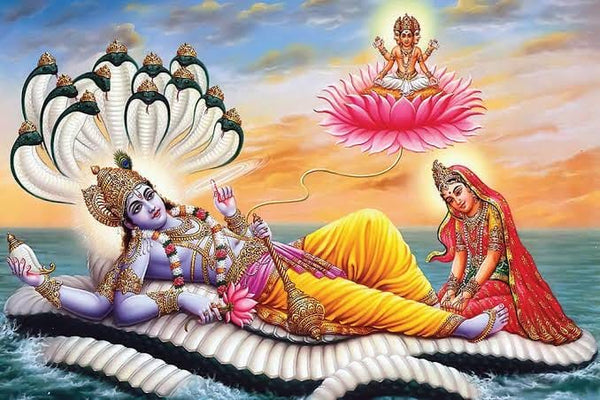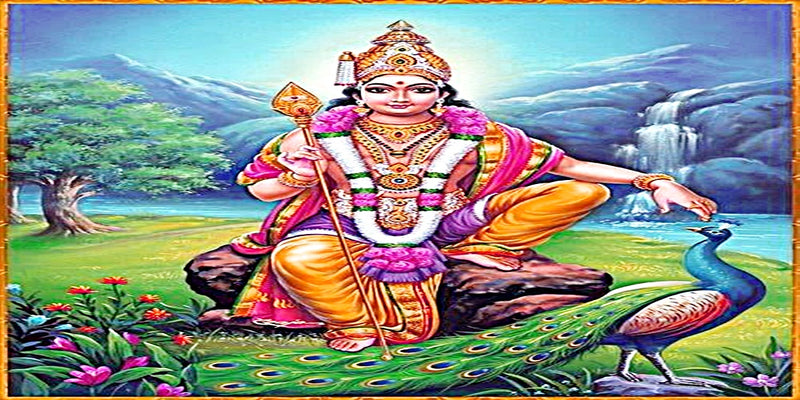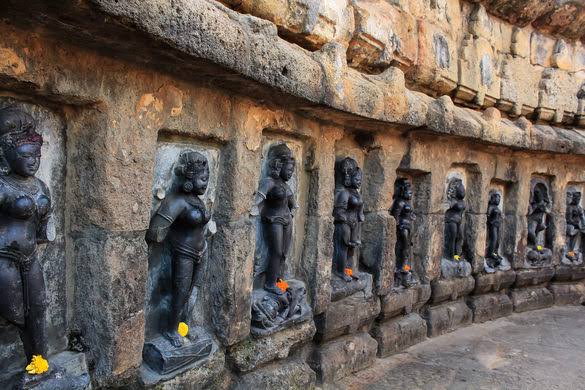Shiva's Damru

Shiva is depicted as holding a Damroo (Damru) – a small drum shaped like an hourglass. Shiva holding Damaru is popular in the Nataraja form. Sometimes he is shown in a dancing posture other than Nataraja and holding the Damaru. In some images the Damaru is tied to the Trishul or trident. The sound from Damaru symbolizes the sound that originates creation and perpetuates the universe.
In Hinduism, especially by Shiva devotees, it is believed that beating of the Damaru by Shiva produced the very first sound (nada). This first sound was made in the void of nothingness. Shiva began his dance of creation to the rhythm of the Damaru. From his dance, the world came into being.
There is also a symbolism regarding the shape of the Damaru - the top portion of the Damaru symbolizes the male creativity of procreation (the Lingam), and the downward representation symbolizes the female creativity of procreation (the Yoni). Symbolically, the creation of the world begins when the lingam and yoni meets at the mid-point of the Damaru, and the destruction takes place when both separate from each other.
Another interpretation of the sound of the Damaru suggests that the drum depicts the powers of the rhythm of the heart beat.
Naga Sadhus and other Saints worshiping Shiva carry a Damru. They produce the sound during worship and also while seeking alms.


